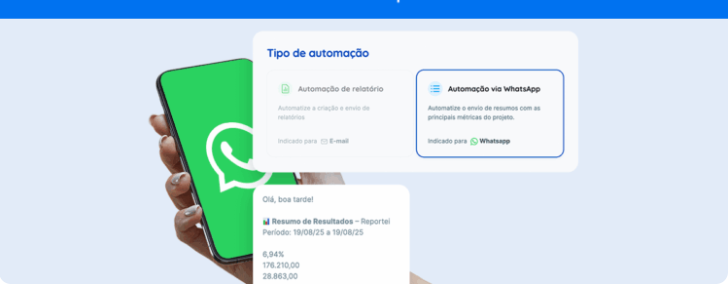Here’s how social proof can help you attract your target audience on your social media and other channels
You’ve probably heard of social proof by now. That’s when brands use customer feedback to give their products or services more credibility. A widely used strategy today!
Social proof comes in several formats and has become fundamental to sales strategies with the rise of the digital era. That’s why we compiled this article with everything you need to know about social proof, the benefits, and how to use it to your advantage. Keep reading!
What is social proof and how does it work?
When it comes to marketing and sales strategies, social proof is vital. That’s because it’s directly linked to decision-making in the customer journey.
Consider the following scenario: you want to buy a new laptop but aren’t sure what model or brand to buy. You do some research on Google, look up the technical configurations that best meet your needs, and get a range of options.
How do you know which to choose? Besides considering the cost (which can be a deciding factor), most people will look for customer reviews to learn firsthand about other people’s experiences.
It’s a fact that potential buyers will find it easier to believe recommendations from customers than a brand’s promotional ads.
That’s why we tend to make decisions more quickly when met with social proof (like customer testimonials, stories of success, or reviews).
If a laptop is rated poorly, you might scratch it off your list to avoid problems the previous buyers had (even if it is more affordable). But if it’s cost-effective, you’re more likely to be willing to give the brand or model a try.
How can your company benefit from social proof?
As you can see, social proof plays a crucial role in the customer journey. Including it in your strategy can bring a world of benefits. A few of those are:
- increasing brand authority, establishing your presence, and gaining respect in the market;
- The opportunity of receiving feedback from customers and starting a dialogue with them. Even if it’s not all positive at first, you get to listen to your customers and solve their problems, improving the customer experience;
- Higher product or brand acceptance, especially from potential buyers;
- And as we mentioned before, you get to influence the decision-making stage, speeding up the process and increasing conversions.
5 main ways to use social proof
At this point, you can probably tell how vital social proof is to any business marketing strategy. But do you know how to use it?
We’ve selected five of the main ways to showcase satisfied customers and help you boost your brand authority and conversions. Check them out below!
1. Case studies
Case studies, or success stories, are a common strategy for B2B companies. They showcase the successful results of customers who have used a brand’s solutions.
A good case study is made of customer stories (starting at first contact), highlighting challenges and triumphs. But just telling a story is not enough. You need to back it up with actual stats and data to prove that the product or service helped your customers reach success.
There are several ways of getting your case studies to potential customers. A few examples are creating website pages, rich materials, and videos. You can also try out different formats your persona might like.
2. Testimonials
Another format for social proof that many brands have been using is testimonials, with customers talking about products or services. That’s because testimonials are pretty easy to get and are suitable for a wide range of business segments. They also say a lot about a company, even if they’re short.
You’ll usually find testimonials on website pages. But you can include them as social media content, too, and on other channels where the brand advertises.
3. Interaction on social media
Social networks are crucial when it comes to social proof. People on social media pay attention to what buyers have to say about their experience and how brands interact with consumers.
Users will express how they feel about products and services by sharing comments and stories and making mentions in posts. Then it’s up to the company to use Social Listening, gather feedback, and use that to improve the customer experience.
Of course, it’s not all a bed of roses. Besides keeping an eye out for positive mentions and how you can use them, you’ll have to reply to negative comments and take care of any problems. That shows you care and are willing to help your customers out as much as possible.
4. Reviews
We touched on reviews as social proof earlier and how they directly influence decision-making.
On company websites or other platforms (like Google My Business, Reclame Aqui, and TripAdvisor), consumers are always looking for honest feedback on products and services and are interested in how companies handle issues.
For example, on ifood and other delivery apps, many users tend to look at reviews before placing orders. No one wants to risk having a bad experience with their lunch or dinner, do they?
5. Opinions and References in your business segment
Finally, another popular kind of social proof comes from opinion leaders, who can help a brand gain relevance more spontaneously.
Regardless of the business segment, there’s always someone considered a reference who may like your product or service.
We don’t necessarily mean paid partnerships, but you might consider sending products to try out, approaching influencers your persona may like or trying something else along those lines to use honest opinions to promote your brand. That helps increase your brand influence.
How to use social proof in your digital marketing strategy
There are several ways to include social proof in your digital marketing strategies, especially if you manage social media or customers. We’ve put together a list to help you. Check it out:
- Leave room on your website and other platforms (like Google My Business) for users to review your products or services and share opinions. If they need any help, they know they’ll get a reply;
- Invite your followers to share personal experiences they’ve had with your product or service on social media;
- Use surveys to find testimonials from your clients. You can upload those to your website or other channels;
- Use your customers’ experiences to create case studies that show how your product or service helped them solve problems;
- Use Social Listening to find out what users are saying online about your brand. But don’t stop at Listening. Make sure you act on feedback to make improvements.
- Look for partnerships to optimize social proof for your brand with opinion leaders or loyal customers who have authority on social media;
- Optimize social proof to encourage users in the final stretch of the buyer journey to prompt them to make a decision. You can create remarketing ads, specific CTAs, and more.
However you use social proof in your digital marketing strategy, remember that it should always be honest. Aim to grow your business without making things up.
Did you like our article about social proof and how to use it? Share it with one of your friends in digital marketing to help them out too!



